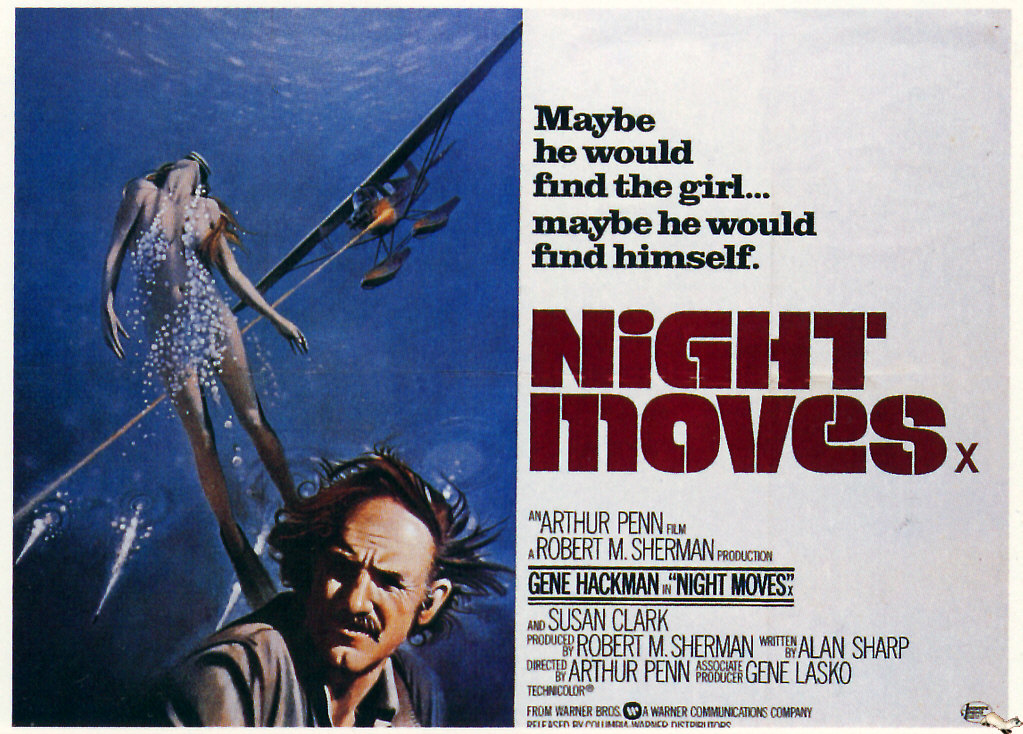

There is a young James Woods as a wiry, spiky mechanic who’s one of Delly’s conquests. Maybe it’s the ever-present comparisons to Raymond Chandler.
Night moves 1975 film analysis movie#
Edward Binns, as something in the movie biz, also struggles to create a credible character. Warren struggles, so does Janet Ward as the missing girl’s mother (but then she is meant to be playing an actress who was never much good). The casting is an interesting mix of people who act well and ones who don’t.

Penn gives us atmosphere, thick and warm and a bit dog-eared – the office that’s seen better days, the ageing starlet ditto, the beat-up car Harry drives – especially once the action shifts down to Florida, where the missing Delly is hanging out with her stepdad and his woman Paula (Jennifer Warren), who catches Harry’s eye.
Night moves 1975 film analysis pro#
It’s more of a mood thing, one established completely the moment Gene Hackman’s Moseby first appears, a former football pro turned old-school PI with charm, a smart mouth and woman trouble. Almost as if director Arthur Penn were aiming to recreate the effect of his biggest hit to date, Bonnie and Clyde, and its bullet-riddled down-curtain.īut even with the maxed-out ending, this is a film that’s not setting out to wow us with its plot. Not much to see here, maybe, but with about 30 minutes of running time still to go – case solved, girl heading home with Harry – the plot dives off up an unexpected avenue and suddenly this downbeat noir is exploding with stunts, gunplay, on-screen death and a spectacular bit of action. As to the daughter, she’s jailbait and Harry’s method of tracking her down is to work his way backwards through the men who have taken advantage of this 16-year-old who has inherited, Harry notes, her mother’s once-great tits. The client slots right into the groove too, being a boozy floozy more interested in bedding men than having her daughter found. And in many ways Harry is the successor of Marlowe’s white-knight good guy walking the mean streets described by Raymond Chandler. It’s precisely the sort of case that Philip Marlowe might have taken, back in the 1940s. Gene Hackman plays Harry Moseby, a jaded private detective hunting for the missing teenage daughter of a retired Hollywood actress. In terms of plot and character there really isn’t much to see here, or nothing new at any rate. Since then, The Long Goodbye has been rerated upwards to join Chinatown in the pantheon, and now it looks as Night Moves is also in the process of being re-appraised (though Roger Ebert wasn’t alone in praising it to the skies on its release). Of the bunch only Chinatown was a proper box office and critical hit, and even then some critics were a bit sniffy (the New York Times didn’t go a bundle).

All three are neo-noirs recalling the era of Raymond Chandler, Sam Spade and Humphrey Bogart. Arthur Penn’s 1975 movie Night Moves sits snugly alongside two other films made about the same time – Polanski’s Chinatown (which went into production in the same month in 1973) and Altman’s The Long Goodbye, which had opened earlier that year.


 0 kommentar(er)
0 kommentar(er)
